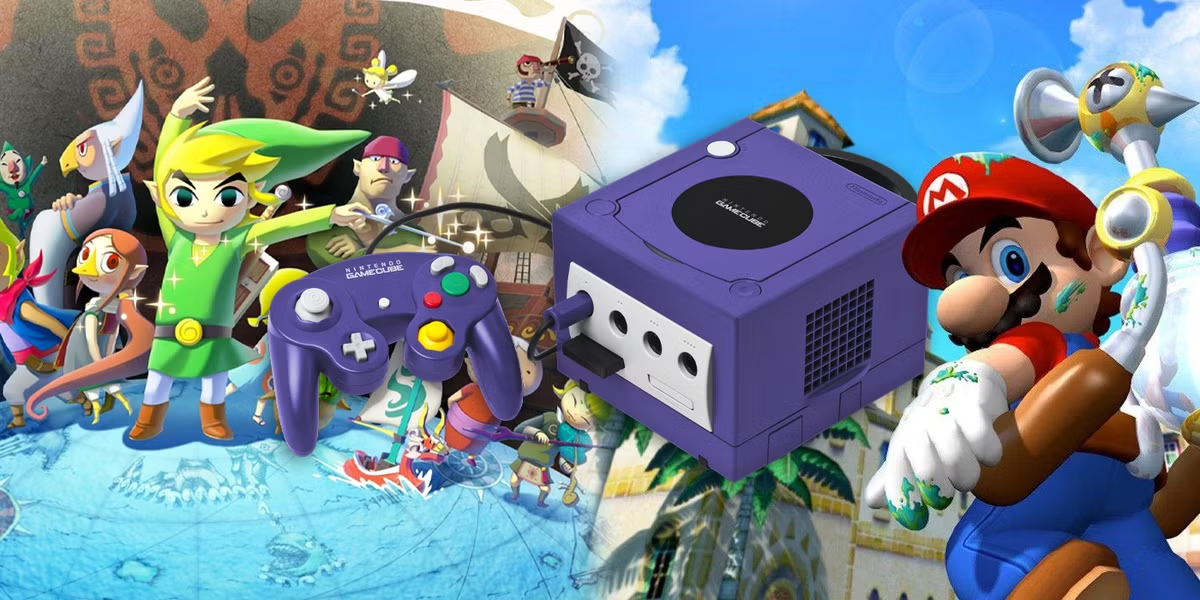Guides
Nintendo GameCube Guide: A Nostalgic Journey Through a Classic Console

As a longtime gamer, it’s impossible not to look back at certain consoles that left a significant mark on the industry. Among these, the Nintendo GameCube stands out as a unique and beloved piece of gaming history. Released in 2001, the GameCube was Nintendo’s entry into the sixth generation of gaming, competing with the likes of the PlayStation 2 and Xbox. Despite its relative commercial struggles, the GameCube garnered a loyal fanbase, partly due to its exceptional library of games, distinct design, and remarkable ability to push the boundaries of gaming during its time. In this comprehensive Nintendo GameCube guide, we’ll dive deep into the features that defined the console, its top titles, and some helpful tips for anyone looking to relive its glory days.
The Cultural Impact and Unique Features of the Nintendo GameCube
The Nintendo GameCube is a console that stands out not just because of its games but also for the way it was crafted. It was Nintendo’s bold attempt to redefine the traditional gaming experience. It wasn’t just another rectangular box; the GameCube’s compact, cube-like design made it a standout from the start. This design wasn’t just for show; it was functional too, allowing easy portability, a feature not commonly seen in consoles of that era. Whether you were taking it to a friend’s house or to a local gaming tournament, the GameCube’s built-in handle made it one of the most portable consoles ever made.
The Power and Design of the GameCube
In terms of hardware, the Nintendo GameCube wasn’t the most powerful console on the market. Still, it featured a custom IBM PowerPC processor running at 485 MHz, coupled with an ATI graphics chip. While this didn’t quite compete with the PlayStation 2 or Xbox’s hardware, it was more than capable of delivering impressive visuals for its time. The graphics processing unit in the GameCube allowed for sharp textures, vibrant colors, and smooth gameplay, which made many games on the system visually stunning. The GameCube’s ability to deliver high-quality graphics was especially noticeable in first-party Nintendo titles like “The Legend of Zelda: The Wind Waker” and “Metroid Prime,” which pushed the hardware to its limits and left an unforgettable mark on the gaming community.
Perhaps one of the most innovative features was the GameCube’s use of mini-DVDs. Unlike the standard CDs used by its competitors, the GameCube used smaller discs, which had a few advantages. The smaller size made it cheaper to produce games, and Nintendo believed that this would help to lower production costs. However, the discs also posed some limitations in terms of storage capacity compared to the larger DVDs used by the PS2 and Xbox. Despite this, developers still managed to create fantastic games that looked and played exceptionally well, largely thanks to Nintendo’s tight integration between hardware and software.
Controller Design: The GameCube’s Uniqueness
The Nintendo GameCube controller was a love-it-or-hate-it affair, but over time, it has become one of the most celebrated controllers in the history of gaming. With its ergonomic design, the controller felt comfortable in the hands, even during extended play sessions. The controller featured a symmetrical layout with a large, comfortable A button at its center, and smaller X, Y, and B buttons around it. The placement of the analog sticks was a bit unconventional for its time but proved to be remarkably intuitive once players got used to it.
What truly made the GameCube controller stand out, however, was the introduction of the Z-trigger. This unique button, located on the back of the controller, allowed players to have more precise control during intense gaming moments, whether in racing games, shooters, or platformers. The triggers, along with the tactile rumble feature, helped immerse players in their gaming experiences, making the GameCube controller a standout among its peers.
Must-Play Games on the Nintendo GameCube
When you think of the Nintendo GameCube, certain games immediately come to mind. These titles helped shape the console’s identity, offering unforgettable experiences that were innovative for their time.
The Legend of Zelda: The Wind Waker
“The Legend of Zelda: The Wind Waker” might be one of the most controversial entries in the Zelda series, but it’s undoubtedly one of the best games to play on the Nintendo GameCube. Upon its initial reveal, the cel-shaded art style was met with mixed reactions, as many fans were hoping for a more realistic look for the next Zelda game. However, this artistic choice ended up being one of the game’s most charming aspects. The bright, colorful world of “Wind Waker” was a breath of fresh air, and the sailing mechanic, which allowed players to explore the vast ocean, added an entirely new dimension to the franchise. Players found themselves immersed in this beautifully crafted world as they helped Link navigate through various puzzles, dungeons, and epic battles to save the land from evil forces.
Super Smash Bros. Melee
“Super Smash Bros. Melee” is a game that transcended its console to become a phenomenon in the competitive gaming world. Even years after its release, Melee is still played at tournaments around the world, and its community continues to thrive. The fast-paced combat, tight controls, and deep roster of characters made it the definitive party game for many. The GameCube controller was an integral part of this experience, with its button layout proving ideal for performing the game’s complex moves and combos. Whether you’re playing casually with friends or competing in a high-stakes tournament, “Super Smash Bros. Melee” remains one of the most iconic games of the GameCube era.
Metroid Prime
“Metroid Prime” was one of the first games to bring the Metroid franchise into the world of 3D, and it did so flawlessly. The game blended exploration, platforming, and first-person shooting elements to create an unforgettable experience. Players took on the role of Samus Aran, exploring alien planets, solving puzzles, and battling fierce enemies in a stunning world full of atmosphere. The GameCube’s controller was particularly well-suited for this type of gameplay, giving players precise control as they explored every nook and cranny of the game’s vast environments. The game’s visual design, storytelling, and overall polish made “Metroid Prime” one of the standout games on the console and a hallmark of the GameCube’s library.
Luigi’s Mansion
“Luigi’s Mansion” was one of the first games released on the GameCube, and it immediately captured players’ attention with its unique premise and spooky atmosphere. In this game, players took control of Luigi as he explored a haunted mansion in search of his brother Mario. Armed with a vacuum cleaner, Luigi had to capture ghosts while solving puzzles and navigating the eerie mansion. “Luigi’s Mansion” became a cult classic, thanks to its whimsical yet creepy tone, engaging gameplay, and charming characters.
Enhancing Your Nintendo GameCube Experience
To get the most out of your GameCube experience, it’s important to consider a few accessories and enhancements that can take your gameplay to the next level.
Component Cables for Better Graphics
While the GameCube doesn’t natively support HD visuals, using component cables can improve the image quality significantly. These cables allow the GameCube to output in progressive scan mode, which results in clearer, sharper visuals on compatible TVs. If you’re playing games that support it, such as “The Legend of Zelda: The Wind Waker,” you’ll notice a huge difference in the overall visual experience.
GameCube Memory Cards
The GameCube used proprietary memory cards for saving game progress, and it’s crucial to have one if you plan on playing through the many games in the console’s library. These memory cards come in various sizes, but I’d recommend getting one with ample storage space to ensure you can save progress across multiple games without worrying about running out of space.
Game Boy Player
One of the best accessories for the GameCube is the Game Boy Player. This attachment allows you to play your Game Boy, Game Boy Color, and Game Boy Advance games on your television. It’s a fantastic way to experience some of the best portable games on the big screen and adds even more value to your GameCube setup.
Conclusion
The Nintendo GameCube is a console that has earned its place in the hearts of many gamers. While it may not have achieved the same commercial success as the PlayStation 2 or Xbox, its impact on the gaming world is undeniable. From its unique design to its unforgettable library of games, the GameCube remains a treasured part of gaming history. If you’re new to the system, or if you’re looking to revisit it, this Nintendo GameCube guide has hopefully provided some insight into what makes this console so special. Whether you’re revisiting it for nostalgia or discovering it for the first time, the GameCube’s charm and innovative gameplay are sure to provide hours of entertainment.










